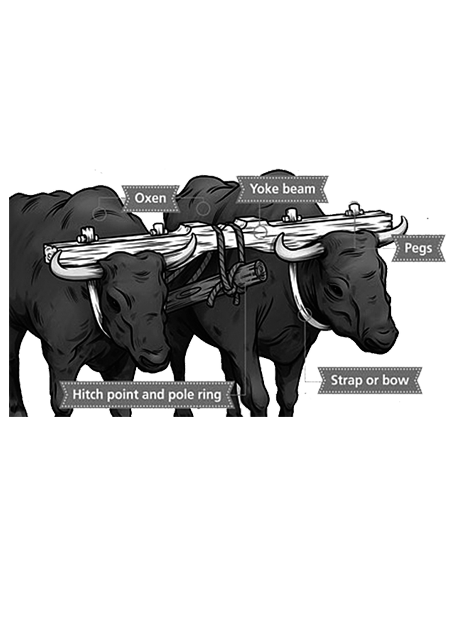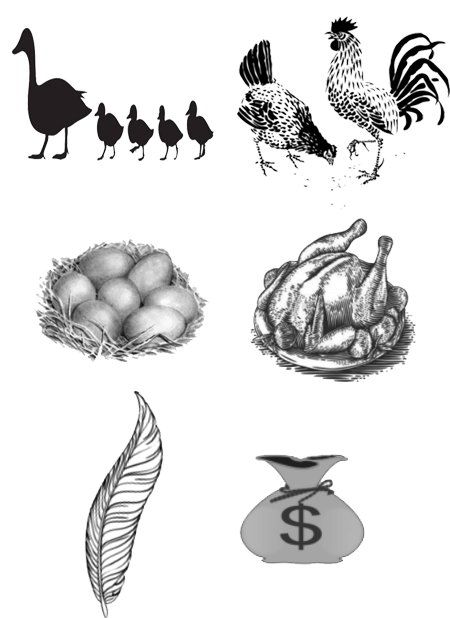Homeplace 1850s Working Farm
Animals on an 1850s Farm
Hogs
Hog meat was salted and hung in the smoke house to make hams and bacon for food in the winter. The fat from the hog was called lard and was used in many ways including making soap and candles.

Sheep
Sheep wool was shorn (cut) every spring. The wool was woven and spun into cloth and yarns. The wool had to be washed and carded (brushed) and dyed. Then it could be made into clothing, rugs and quilts for the farm.

Mules and Oxen
Before tractors, mules and oxen provided the draft power (transferring the animals muscle power to push or pull a heavy load), for many jobs on the farm, from plowing to planting to hauling crops to market.
Mules have a horse mother and donkey father. Mules are hitched to plows, planters, cultivators, and wagons. A man and a mule could walk up to 30 miles a day on hard ground. In 1850 southerners used mule power more than anywhere else in the United States.

Oxen
Oxen are cattle that have been trained to do work such as pulling plows or carts, by using a yoke. In 1850 farmers needed a milk producing cow that could work in rough, stony pastures and survive in harsh winters. The oxen are very strong and have a slow steady pace that also makes them well-suited for hauling logs and firewood.

Chickens and Ducks
Chickens and ducks were raised for their eggs, meat and feathers. Eggs could be sold for money or traded for things needed on the farm.
Ducks and chickens are omnivores. They eat water plants, worms, grain, seeds, nuts, fruit, insects, and even small fish.
Chickens have a great memory and can recognize over 100 different faces of people or animals.
Mother hens talk to their chicks when they are still in the egg.
Each chicken sound means something specific.
Ducks have been domesticated as pets and farm animals for more than 500 years.
All ducks have highly waterproof feathers.



